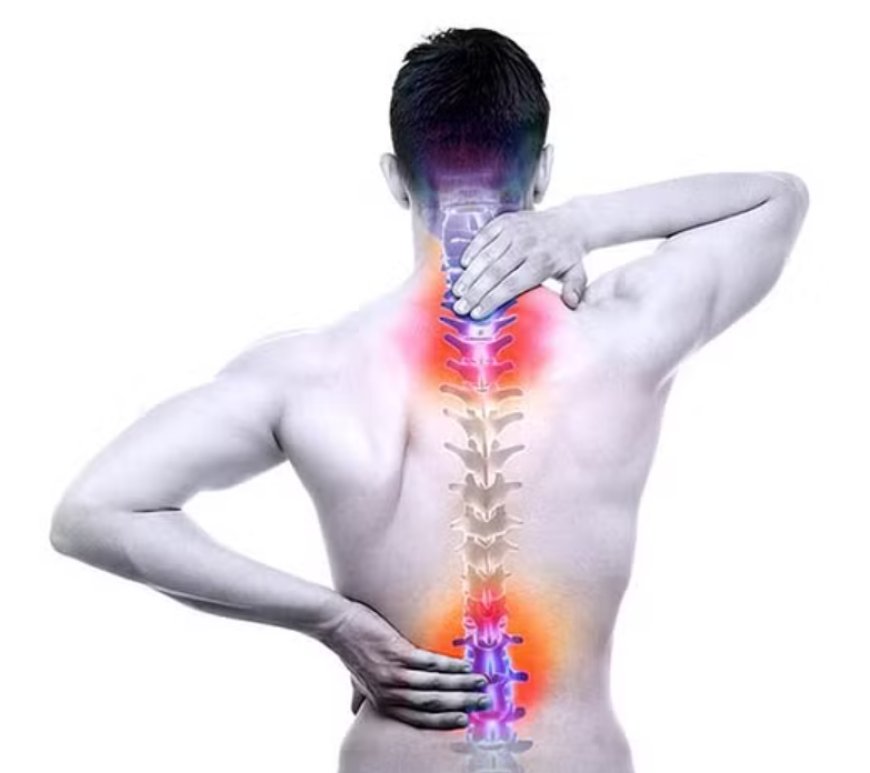ACDF Surgery
When Is ACDF Necessary? Understanding the Indications for Cervical Spine Surgery

Anterior cervical discectomy and fusion (ACDF) is a common surgical procedure used to treat a variety of neck and upper extremity conditions caused by problems in the cervical spine. While it can be a highly effective treatment option, it's not a one-size-fits-all solution. Understanding when ACDF is necessary, and the specific conditions it addresses, is crucial for patients considering this type of surgery. This article delves into the indications for ACDF, helping readers understand the circumstances under which this surgery becomes a viable and often necessary treatment pathway.
What is ACDF?
Before exploring the indications, it's helpful to understand what ACDF entails. It is a surgical procedure performed from the front (anterior) of the neck. It involves removing a damaged disc (discectomy) that is pressing on the spinal cord or nerve roots in the cervical spine. After the disc is removed, the vertebrae above and below the disc space are fused together using a bone graft (either from the patient's own body, a donor, or a synthetic material) and, typically, a plate and screws to stabilize the area while the fusion heals. This fusion essentially creates a single, solid bone segment, eliminating motion at that specific level.
The Primary Goal: Relieving Pressure and Stabilizing the Spine
The overarching goal of this surgery s to alleviate pressure on the spinal cord and nerve roots while simultaneously stabilizing the cervical spine. This pressure, often caused by degenerative changes, injury, or other conditions, can lead to a range of debilitating symptoms. ACDF aims to achieve the following:
- Decompression: Remove the source of compression on the spinal cord or nerves.
- Stabilization: Prevent further instability and potential damage to the spinal cord and nerves.
- Pain Relief: Reduce or eliminate neck pain, arm pain, and other associated symptoms.
- Neurological Function Improvement: Improve or restore neurological function lost due to nerve compression.
Key Indications for ACDF Surgery
Several specific conditions may warrant ACDF surgery. Here are some of the most common:
1. Cervical Disc Herniation:
A herniated disc occurs when the soft, gel-like center of an intervertebral disc pushes through a tear in the tough outer layer. This can compress the spinal cord or nearby nerve roots. Symptoms can include:
- Neck pain: Often radiating into the shoulder and upper back.
- Arm pain: Shooting pain, often described as burning or electrical, down the arm.
- Numbness and tingling: In the arm, hand, or fingers.
- Weakness: In the arm or hand muscles.
ACDF may be considered when conservative treatments, such as physical therapy, pain medication, and injections, fail to provide adequate relief and the symptoms significantly impact the patients quality of life. The surgery removes the herniated portion of the disc, relieving pressure on the neural structures.
2. Cervical Spinal Stenosis:
Spinal stenosis refers to the narrowing of the spinal canal, the space through which the spinal cord passes. This narrowing can put pressure on the spinal cord and nerve roots. Cervical spinal stenosis is most frequently caused by age-related degenerative changes such as:
- Osteoarthritis: Degeneration of the cartilage in the facet joints, leading to bone spurs.
- Thickening of ligaments: The ligaments that support the spine can thicken and stiffen, encroaching on the spinal canal.
- Disc degeneration: Bulging or herniated discs can contribute to spinal canal narrowing.
Symptoms of cervical spinal stenosis can be similar to those of a herniated disc, but may also include:
- Myelopathy: Compression of the spinal cord itself can lead to problems with balance, coordination, bowel and bladder control, and even paralysis in severe cases. This is a critical indication for considering ACDF.
When spinal stenosis causes significant neurological deficits or pain that is unresponsive to conservative treatment, it may be recommended to decompress the spinal cord and nerve roots.
3. Cervical Spondylosis (Degenerative Disc Disease):
Cervical spondylosis is a general term for age-related wear and tear of the cervical spine. Over time, the intervertebral discs can dehydrate and shrink, leading to:
- Loss of disc height: This can cause nerve compression and spinal instability.
- Bone spurs (osteophytes): The body attempts to stabilize the spine by forming bone spurs, which can further narrow the spinal canal and compress nerve roots.
Symptoms of cervical spondylosis can range from mild neck pain to severe neurological deficits. ACDF may be considered when spondylosis causes significant pain, nerve compression, or spinal instability that is not adequately controlled with conservative measures.
4. Cervical Instability:
Cervical instability occurs when the ligaments and muscles that support the cervical spine are damaged or weakened, allowing excessive movement between vertebrae. This can be caused by:
- Trauma: Such as a car accident or fall.
- Rheumatoid arthritis: An autoimmune disorder that can damage the joints and ligaments in the spine.
- Tumors: Tumors in the cervical spine can weaken the surrounding structures.
Symptoms of cervical instability can include:
- Neck pain: Often exacerbated by movement.
- Headaches: Especially at the base of the skull.
- Muscle spasms: In the neck and shoulders.
- Neurological symptoms: If the instability is compressing the spinal cord or nerve roots.
ACDF can be used to stabilize the cervical spine by fusing the affected vertebrae together, preventing excessive movement and reducing the risk of further neurological damage.
5. Other Conditions:
Less frequently, ACDF may be used to treat other conditions affecting the cervical spine, such as:
- Cervical fractures: To stabilize the spine after a fracture.
- Cervical tumors: To remove tumors and stabilize the spine.
- Infections: To remove infected tissue and stabilize the spine.
When is ACDF Not Recommended?
While ACDF can be highly effective, it's not always the best option. Factors that may make ACDF less desirable include:
- Significant medical comorbidities: Patients with serious underlying health conditions may be at increased risk for complications from surgery.
- Smoking: Smoking can impair bone healing and increase the risk of nonunion (failure of the fusion to heal).
- Obesity: Obesity can increase the risk of surgical complications.
- Lack of correlation between imaging findings and symptoms: If imaging studies show abnormalities in the cervical spine, but the patient's symptoms do not match these findings, ACDF may not be appropriate.
- Successful response to conservative treatment: If conservative treatments are effectively managing the patient's symptoms, surgery may not be necessary.
The Decision-Making Process: A Collaborative Approach
The decision to undergo ACDF surgery should be made in consultation with a qualified spine surgeon. The surgeon will conduct a thorough evaluation, including:
- Medical history: Reviewing the patient's past medical conditions, medications, and allergies.
- Physical examination: Assessing the patient's neurological function, range of motion, and pain levels.
- Imaging studies: Such as X-rays, MRI, and CT scans, to visualize the cervical spine and identify the source of compression.
Based on this evaluation, the surgeon will discuss the risks and benefits of ACDF surgery with the patient, as well as alternative treatment options. The patient should feel comfortable asking questions and expressing their concerns before making a decision.
Conclusion
ACDF is a valuable surgical option for treating a variety of cervical spine conditions that cause pain, neurological deficits, and spinal instability. Understanding the specific indications for ACDF, as well as the potential risks and benefits, is essential for patients considering this type of surgery. A collaborative approach between the patient and their spine surgeon is crucial in determining whether ACDF is the most appropriate treatment option. By carefully considering all factors, patients can make informed decisions that improve their quality of life and long-term spinal health.


































